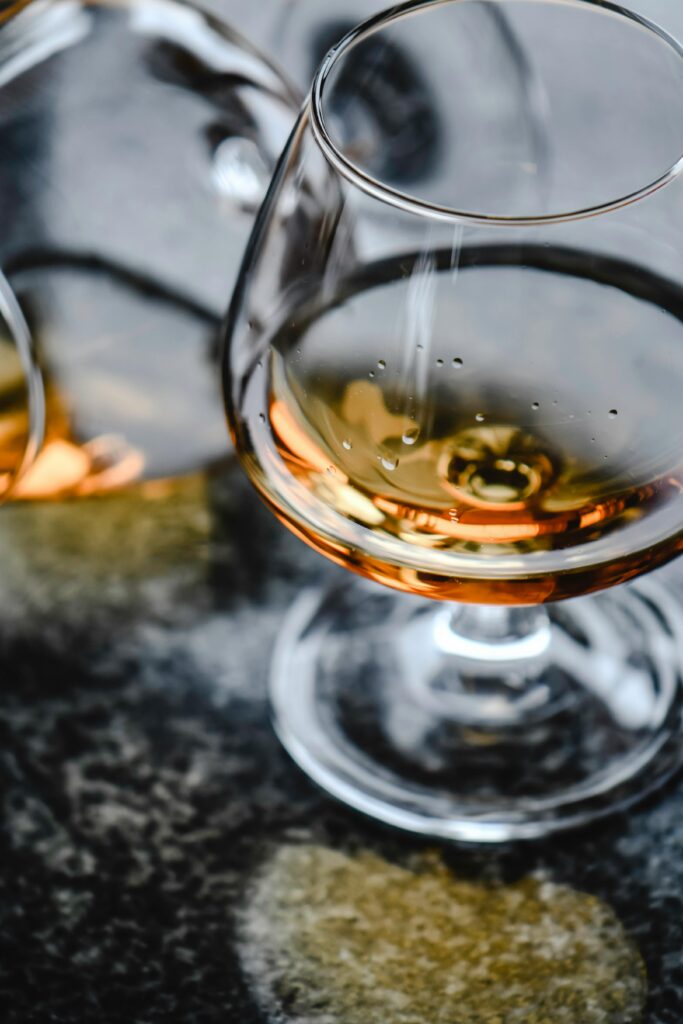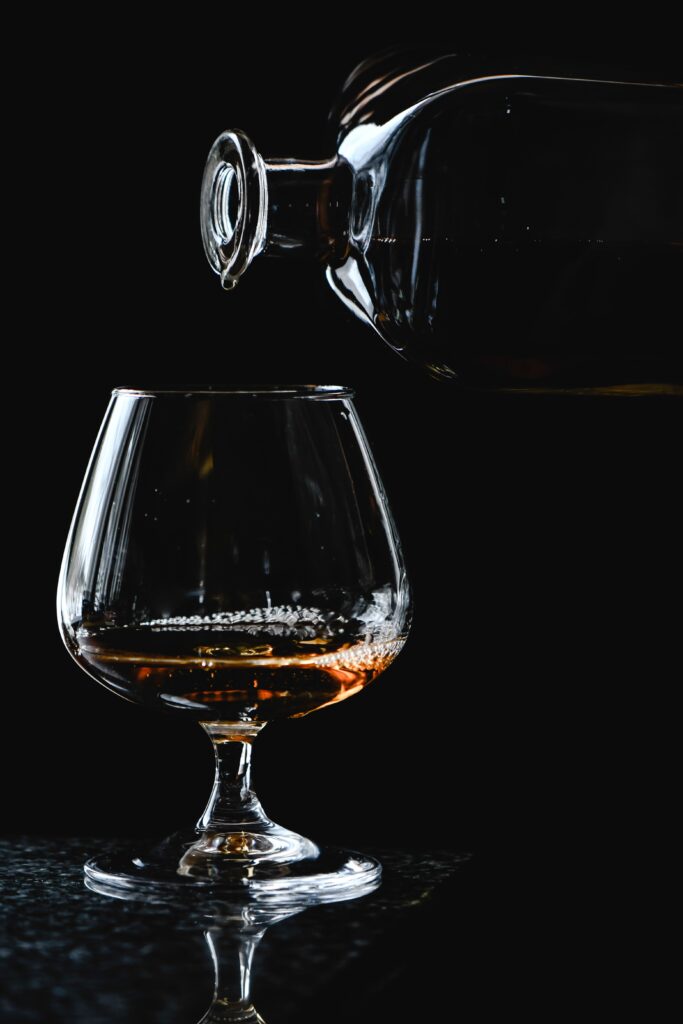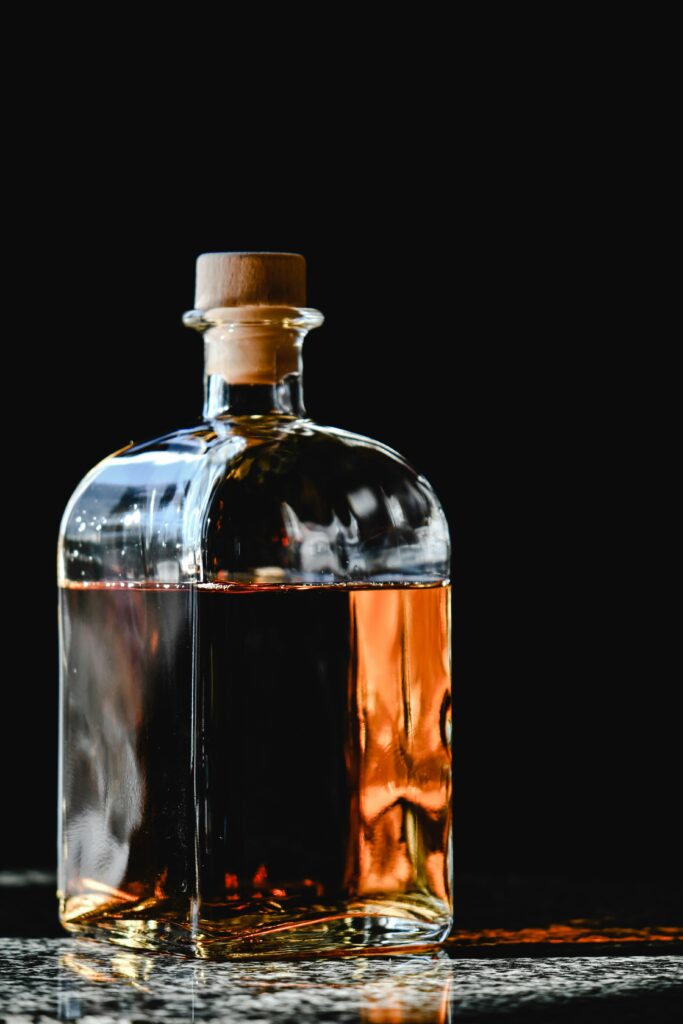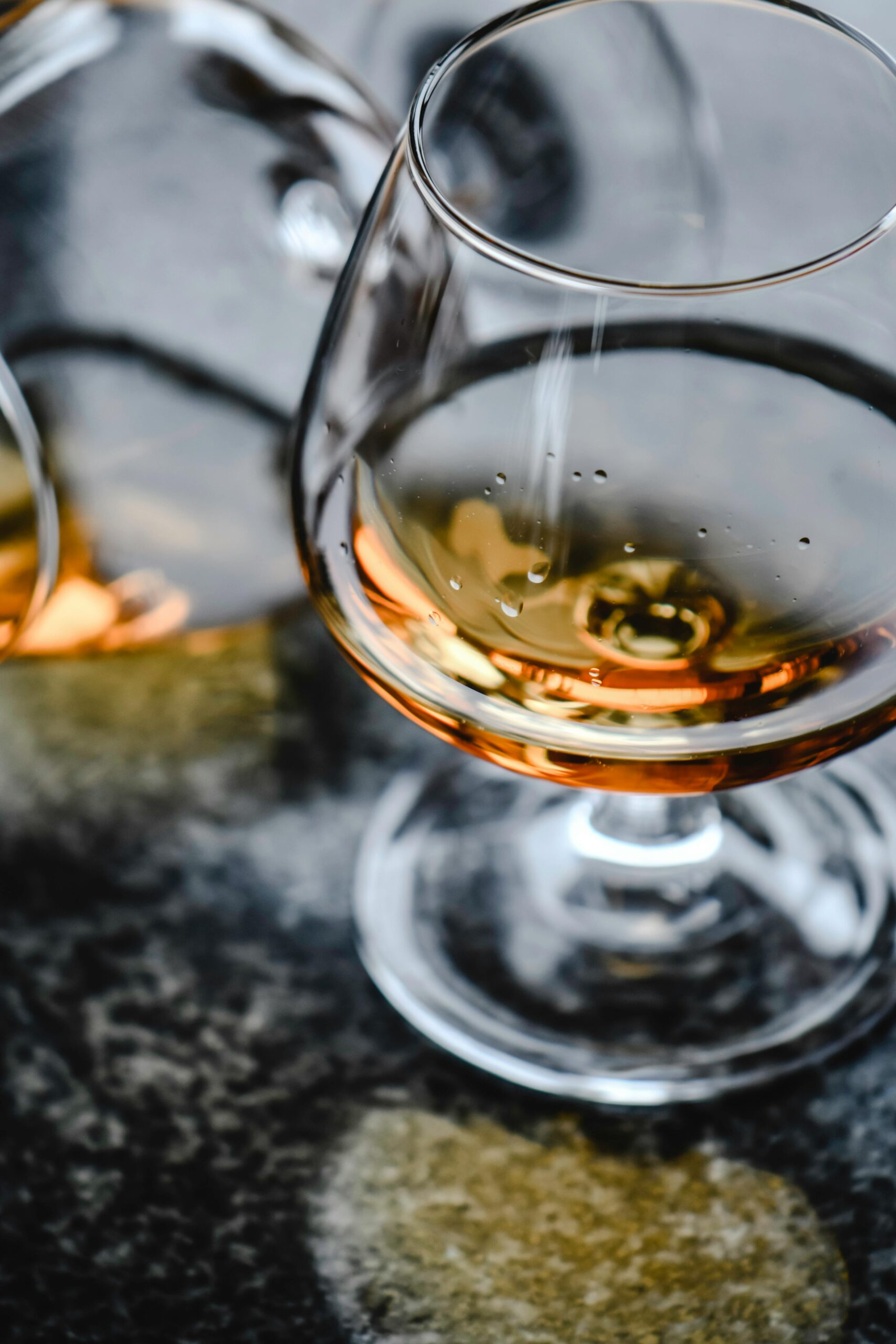If you’re a bourbon enthusiast looking to expand your knowledge and palate, then look no further! This informative guide will take you on a delightful journey through the vast array of bourbon varieties, from the classic straight bourbons to the intriguing world of flavored options. Whether you’re a seasoned connoisseur or a curious newcomer, this article is here to guide you through the rich history, unique characteristics, and diverse flavors of these beloved spirits. So sit back, relax, and prepare to embark on a bourbon adventure like no other!

What is Bourbon?
Bourbon is a type of American whiskey that is known for its rich flavor and smooth character. It is made primarily from corn and aged in charred oak barrels, giving it a distinct taste and amber color. Bourbon is one of the most popular and beloved spirits in the United States, with a rich history and strict regulations determining what can be categorized as bourbon.
Definition
To be considered bourbon, a whiskey must meet certain legal requirements set by the U.S. Federal Standards of Identity for Distilled Spirits. These requirements include:
- The whiskey must be made in the United States.
- It must be made from a grain mixture that is at least 51% corn.
- It must be distilled to no more than 160 proof (80% alcohol by volume).
- It must be aged in new, charred oak barrels.
- It must enter the barrel for aging at no more than 125 proof (62.5% alcohol by volume).
- It must be bottled at a minimum of 80 proof (40% alcohol by volume).
Production Process
The production process of bourbon involves several key steps. First, a mixture of grains, including corn, rye, barley, and sometimes wheat, known as the mash bill, is cooked and fermented. The resulting liquid, known as the distillers beer, is then distilled to separate the alcohol from the solids. The distilled whiskey is then aged in charred oak barrels, where it gains its distinct flavors and color. The aging process can range from a few years to several decades, depending on the desired flavor profile and the regulations of the distillery.
Straight Bourbon
Straight bourbon is a specific type of bourbon that must meet additional requirements beyond those of regular bourbon. These requirements pertain to the aging process and the use of additives.
Definition
To be labeled as straight bourbon, the whiskey must meet the following requirements:
- It must be aged for a minimum of two years.
- It must not contain any additives, such as flavorings or colorings.
Requirements
In addition to the legal requirements mentioned earlier, straight bourbon must also adhere to the aging and additive restrictions. This extended aging period allows for the development of more complex flavors and a smoother finish. By prohibiting the use of additives, straight bourbon ensures the purity and integrity of the spirit.
Taste Profiles
Straight bourbon tends to have a robust and full-bodied flavor profile. It often exhibits notes of vanilla, caramel, oak, and spices. The aging process also contributes to a smoother mouthfeel and a longer, more satisfying finish.
Popular Straight Bourbon Brands
Some of the most popular straight bourbon brands include:
- Buffalo Trace
- Maker’s Mark
- Knob Creek
- Wild Turkey
- Four Roses
Traditional Bourbon
Traditional bourbon refers to a style of bourbon that closely adheres to the original methods and recipes used in the early days of bourbon production. These bourbons often emphasize historical accuracy and maintain traditional production techniques.
Definition
While not an official category, traditional bourbon is recognized for its commitment to historical methods and characteristics that closely resemble the bourbons produced in the past.
Characteristics
Traditional bourbons aim to replicate the taste and production techniques of earlier times. They often prioritize older recipes and traditional ingredients, such as a high corn content in the mash bill, to achieve a flavor profile reminiscent of early American bourbon.
Production Methods
Traditional bourbon production methods typically involve the use of pot stills, which are reminiscent of the stills used in the early days of bourbon distilling. These pot stills are believed to contribute to a fuller-bodied and more flavorful bourbon. Traditional bourbons also tend to have longer aging periods, further enhancing their character and complexity.
Notable Traditional Bourbon Distilleries
Some distilleries known for producing traditional bourbons include:
- Old Forester
- Heaven Hill
- Jim Beam
- Woodford Reserve
- Elijah Craig
Small Batch Bourbon
Small batch bourbon refers to a bourbon that is produced in limited quantities, typically from a small selection of hand-picked barrels. This approach allows for greater attention to detail and often results in unique flavor profiles.
Definition
Small batch bourbon is not legally defined, but the term typically refers to a bourbon that is crafted with care and attention to detail, using a limited number of barrels.
Limited Production
Small batch bourbons are produced in smaller quantities compared to mass-produced bourbons. This limited production allows distillers to focus on quality and craftsmanship, often resulting in higher-quality bourbons that showcase unique flavors and characteristics.
Distinctive Flavor Profiles
Because small batch bourbons are crafted from a select few barrels, they tend to have distinct flavor profiles that showcase the unique characteristics of the chosen barrels. These bourbons often exhibit a complexity of flavors, with notes of caramel, toffee, spices, and oak.
Well-known Small Batch Bourbon Producers
Some well-known small batch bourbon producers include:
- Blanton’s
- Basil Hayden’s
- Booker’s
- Four Roses Small Batch
- Elijah Craig Small Batch

Single Barrel Bourbon
Single barrel bourbon is a premium category of bourbon that is produced from a single barrel rather than a blend of multiple barrels. This production method allows for individual barrels to shine and creates a unique drinking experience.
Definition
Single barrel bourbon is bourbon that is bottled from a single barrel rather than being blended from multiple barrels. Each bottle is sourced from a specific barrel, which is carefully selected for its unique qualities.
Unique Characteristics
Since each bottle of single barrel bourbon comes from a different barrel, the flavor profile can vary significantly from barrel to barrel. This variation makes single barrel bourbon an exciting category for bourbon enthusiasts, as each bottle offers a unique tasting experience.
Quality Control
When selecting barrels for single barrel bourbon, distilleries often have rigorous quality control measures in place to ensure that only the best barrels are chosen. This attention to detail ensures that each bottle of single barrel bourbon meets the distillery’s high standards for flavor, complexity, and overall quality.
Prominent Single Barrel Bourbon Brands
Some prominent single barrel bourbon brands include:
- Blanton’s Single Barrel
- Four Roses Single Barrel
- Eagle Rare Single Barrel
- Jefferson’s Ocean Single Barrel
- Old Forester Single Barrel
High Rye Bourbon
High rye bourbon is a bourbon that contains a higher percentage of rye in its mash bill. This increased rye content contributes to a spicier and more robust flavor profile.
Definition
High rye bourbon is a bourbon that has a higher percentage of rye in its grain mixture compared to other bourbon varieties. While there is no legal definition for high rye bourbon, it typically contains around 20% or more rye in the mash bill.
Rye Content Variations
Bourbons are required to have a minimum of 51% corn in their mash bill, but the remaining percentage can include various grains such as rye, barley, and wheat. High rye bourbons have a higher percentage of rye, which can range from 20% to 35% or more, depending on the distillery’s recipe.
Flavor Profiles
The increased rye content in high rye bourbons imparts a spiciness and complexity to the flavor profile. These bourbons often exhibit notes of black pepper, baking spices, and a lively, robust character. High rye bourbons are often favored by whiskey enthusiasts who appreciate bold and flavorful spirits.
Notable High Rye Bourbon Examples
Some notable examples of high rye bourbon include:
- Bulleit Bourbon
- Old Grand-Dad
- Four Roses Small Batch
- High West Bourye
- Woodford Reserve Master’s Collection

Wheated Bourbon
Wheated bourbon is a type of bourbon that replaces the traditional rye content in the mash bill with wheat. This substitution results in a softer, smoother flavor profile.
Definition
Wheated bourbon is a bourbon that replaces a significant portion of the rye in the mash bill with wheat. The term “wheated” is derived from the use of wheat as a primary ingredient in the grain mixture.
Use of Wheat in Mash Bill
While traditional bourbon recipes include rye as a secondary grain in the mash bill, wheated bourbons use wheat instead. This substitution contributes to a softer and smoother flavor profile, with less emphasis on spiciness and more focus on sweetness.
Smooth and Sweet Flavors
Wheated bourbons are known for their smooth and sweet flavors. The use of wheat in the mash bill imparts a creamy texture and a gentle sweetness to the bourbon. These bourbons often exhibit notes of caramel, honey, and vanilla, creating a pleasing and easy-drinking experience.
Famous Wheated Bourbon Distilleries
Some famous distilleries known for their wheated bourbons include:
- Maker’s Mark
- W.L. Weller
- Pappy Van Winkle
- Larceny
- Rebel Yell
Flavored Bourbon
Flavored bourbon is a category of bourbon that has been infused with natural flavorings, such as fruit or spices. These flavorings add a new dimension to the bourbon, creating a unique drinking experience.
Definition
Flavored bourbon is bourbon that has been infused with natural flavorings, resulting in a bourbon with added taste profiles beyond what is typically found in traditional bourbon.
Types of Flavorings Used
Flavored bourbons can be enhanced with a variety of natural flavorings, including fruit, spices, herbs, and even infused with other spirits. Common flavorings include cherry, apple, cinnamon, honey, and maple.
Popular Flavored Bourbon Options
Some popular examples of flavored bourbons include:
- Jim Beam Red Stag (Infused with black cherry flavor)
- Maker’s Mark Mint Julep (Infused with mint)
- Wild Turkey Bourbon American Honey (Infused with honey)
- Bird Dog Blackberry (Infused with blackberry flavor)
- Evan Williams Peach (Infused with peach flavor)
Cocktail Recommendations
Flavored bourbons can be enjoyed on their own or used in cocktails to add a new twist to classic recipes. Some cocktail recommendations for flavored bourbons include:
- Cherry Bourbon Smash: Mix cherry-flavored bourbon with muddled mint leaves, fresh lemon juice, and simple syrup for a refreshing and fruity cocktail.
- Cinnamon Old Fashioned: Use cinnamon-infused bourbon in place of regular bourbon in an Old Fashioned cocktail for a spicy and aromatic twist.
- Honey Bourbon Sour: Combine honey-flavored bourbon with fresh lemon juice and simple syrup for a smooth and sweet sour cocktail.
Aged Bourbon
Aging bourbon is a crucial step in the production process that contributes to the development of its flavors and character. Aged bourbon has a smoother taste and often commands a higher price due to its quality and complexity.
Importance of Aging
Aging bourbon is critical to its overall flavor and character development. During the aging process, the bourbon interacts with the charred oak barrels, allowing it to absorb the flavors and tannins from the wood. This interaction adds richness, depth, and complexity to the bourbon.
Aging Process
Bourbon must be aged in new, charred oak barrels to be considered bourbon. The length of the aging process can vary depending on the desired flavor profile and the regulations of the distillery. To achieve the designation of “straight bourbon,” the whiskey must be aged for at least two years, but many premium bourbons are aged for much longer periods, ranging from 6 to 15 years or more.
Typical Age Statements
Bourbon bottles often feature age statements that indicate the minimum amount of time the whiskey has been aged. Common age statements include:
- “Aged for 4 years”
- “10 years old”
- “12-year-old reserve”
These age statements provide consumers with an idea of the bourbon’s maturity and the potential complexities it may possess.
Collectible and Aged Bourbon Releases
Aged bourbon releases are highly anticipated by bourbon enthusiasts, as the extended aging process allows for the development of unique flavor profiles and exceptional quality. Some distilleries release limited editions of aged bourbon, often referred to as “collectible” bourbons, which can command higher prices due to their rarity and desirability.
Craft Vs. Mass-Produced Bourbon
The bourbon market offers a wide range of options, from craft bourbons produced in small quantities to mass-produced bourbons available in large quantities and at lower price points. Exploring both craft and mass-produced bourbons can lead to a greater appreciation for the diversity in flavors and styles.
Craft Bourbon Characteristics
Craft bourbons are typically produced in small quantities by independent distilleries that prioritize quality over quantity. These bourbons often showcase unique flavor profiles and may experiment with different grains, barrel types, and aging techniques. Craft bourbons are known for their attention to detail, artisanal production methods, and personalized approach to whiskey-making.
Mass-Produced Bourbon Advantages
Mass-produced bourbons, on the other hand, are often produced by large distilleries that have the capacity to produce bourbon in large quantities. These bourbons tend to be more widely available and accessible, often at lower price points. Mass-produced bourbons also offer consistency, ensuring that drinkers can expect a familiar taste with each bottle.
Exploring Both Options
Both craft and mass-produced bourbons offer unique advantages and can be enjoyed by bourbon enthusiasts and casual drinkers alike. Exploring both options allows for a broader understanding of the bourbon industry and the diverse flavors and styles available. Whether savoring a small-batch craft bourbon or enjoying a well-known mass-produced choice, the world of bourbon has something to offer every whiskey lover.
